- Home
- L. Frank Baum
The Life and Adventures of Santa Claus Page 3
The Life and Adventures of Santa Claus Read online
Page 3
4. Claus
Another day found Necile's bower the most popular place in the Forest.The nymphs clustered around her and the child that lay asleep in herlap, with expressions of curiosity and delight. Nor were they wantingin praises for the great Ak's kindness in allowing Necile to keep thebabe and to care for it. Even the Queen came to peer into the innocentchildish face and to hold a helpless, chubby fist in her own fair hand.
"What shall we call him, Necile?" she asked, smiling. "He must have aname, you know."
"Let him be called Claus," answered Necile, "for that means 'a littleone.'"
"Rather let him be called Neclaus,"** returned the Queen, "for thatwill mean 'Necile's little one.'"
The nymphs clapped their hands in delight, and Neclaus became theinfant's name, although Necile loved best to call him Claus, and inafterdays many of her sisters followed her example.
Necile gathered the softest moss in all the forest for Claus to lieupon, and she made his bed in her own bower. Of food the infant had nolack. The nymphs searched the forest for bell-udders, which grow uponthe goa-tree and when opened are found to be filled with sweet milk.And the soft-eyed does willingly gave a share of their milk to supportthe little stranger, while Shiegra, the lioness, often crept stealthilyinto Necile's bower and purred softly as she lay beside the babe andfed it.
So the little one flourished and grew big and sturdy day by day, whileNecile taught him to speak and to walk and to play.
His thoughts and words were sweet and gentle, for the nymphs knew noevil and their hearts were pure and loving. He became the pet of theforest, for Ak's decree had forbidden beast or reptile to molest him,and he walked fearlessly wherever his will guided him.
Presently the news reached the other immortals that the nymphs ofBurzee had adopted a human infant, and that the act had been sanctionedby the great Ak. Therefore many of them came to visit the littlestranger, looking upon him with much interest. First the Ryls, who arefirst cousins to the wood-nymphs, although so differently formed. Forthe Ryls are required to watch over the flowers and plants, as thenymphs watch over the forest trees. They search the wide world for thefood required by the roots of the flowering plants, while the brilliantcolors possessed by the full-blown flowers are due to the dyes placedin the soil by the Ryls, which are drawn through the little veins inthe roots and the body of the plants, as they reach maturity. The Rylsare a busy people, for their flowers bloom and fade continually, butthey are merry and light-hearted and are very popular with the otherimmortals.
Next came the Knooks, whose duty it is to watch over the beasts of theworld, both gentle and wild. The Knooks have a hard time of it, sincemany of the beasts are ungovernable and rebel against restraint. Butthey know how to manage them, after all, and you will find that certainlaws of the Knooks are obeyed by even the most ferocious animals.Their anxieties make the Knooks look old and worn and crooked, andtheir natures are a bit rough from associating with wild creaturescontinually; yet they are most useful to humanity and to the world ingeneral, as their laws are the only laws the forest beasts recognizeexcept those of the Master Woodsman.
Then there were the Fairies, the guardians of mankind, who were muchinterested in the adoption of Claus because their own laws forbade themto become familiar with their human charges. There are instances onrecord where the Fairies have shown themselves to human beings, andhave even conversed with them; but they are supposed to guard the livesof mankind unseen and unknown, and if they favor some people more thanothers it is because these have won such distinction fairly, as theFairies are very just and impartial. But the idea of adopting a childof men had never occurred to them because it was in every way opposedto their laws; so their curiosity was intense to behold the littlestranger adopted by Necile and her sister nymphs.
Claus looked upon the immortals who thronged around him with fearlesseyes and smiling lips. He rode laughingly upon the shoulders of themerry Ryls; he mischievously pulled the gray beards of the low-browedKnooks; he rested his curly head confidently upon the dainty bosom ofthe Fairy Queen herself. And the Ryls loved the sound of his laughter;the Knooks loved his courage; the Fairies loved his innocence.
The boy made friends of them all, and learned to know their lawsintimately. No forest flower was trampled beneath his feet, lest thefriendly Ryls should be grieved. He never interfered with the beastsof the forest, lest his friends the Knooks should become angry. TheFairies he loved dearly, but, knowing nothing of mankind, he could notunderstand that he was the only one of his race admitted to friendlyintercourse with them.
Indeed, Claus came to consider that he alone, of all the forest people,had no like nor fellow. To him the forest was the world. He had noidea that millions of toiling, striving human creatures existed.
And he was happy and content.
** Some people have spelled this name Nicklaus and others Nicolas, which is the reason that Santa Claus is still known in some lands as St. Nicolas. But, of course, Neclaus is his right name, and Claus the nickname given him by his adopted mother, the fair nymph Necile.

 The Wonderful Wizard of Oz
The Wonderful Wizard of Oz The Emerald City of Oz
The Emerald City of Oz The Story of Peter Pan, Retold from the fairy play by Sir James Barrie
The Story of Peter Pan, Retold from the fairy play by Sir James Barrie Sky Island
Sky Island Tik-Tok of Oz
Tik-Tok of Oz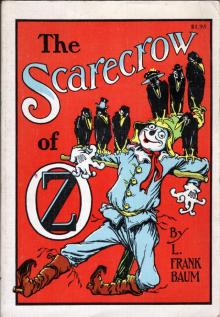 The Scarecrow of Oz
The Scarecrow of Oz The Sea Fairies
The Sea Fairies Glinda of Oz
Glinda of Oz The Lost Princess of Oz
The Lost Princess of Oz The Tin Woodman of Oz
The Tin Woodman of Oz Ozma of Oz
Ozma of Oz The Master Key
The Master Key The Enchanted Island of Yew
The Enchanted Island of Yew Rinkitink in Oz
Rinkitink in Oz The Magic of Oz
The Magic of Oz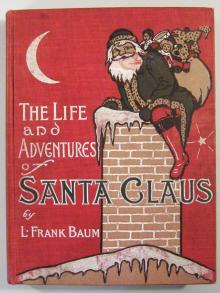 The Life and Adventures of Santa Claus
The Life and Adventures of Santa Claus The Marvelous Land of Oz
The Marvelous Land of Oz The Royal Book of Oz
The Royal Book of Oz The Road to Oz
The Road to Oz Dorothy and the Wizard in Oz
Dorothy and the Wizard in Oz The Patchwork Girl of Oz
The Patchwork Girl of Oz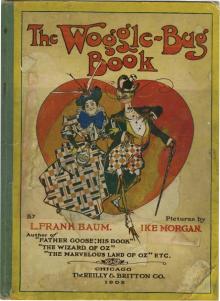 The Woggle-Bug Book
The Woggle-Bug Book Little Wizard Stories of Oz
Little Wizard Stories of Oz Yankee in Oz
Yankee in Oz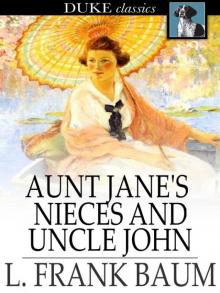 Aunt Jane's Nieces and Uncle John
Aunt Jane's Nieces and Uncle John Mary Louise
Mary Louise Prairie-Dog Town
Prairie-Dog Town Aunt Jane's Nieces at Millville
Aunt Jane's Nieces at Millville John Dough and the Cherub
John Dough and the Cherub Aunt Jane's Nieces in Society
Aunt Jane's Nieces in Society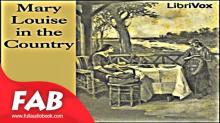 Mary Louise in the Country
Mary Louise in the Country Aunt Jane's Nieces Abroad
Aunt Jane's Nieces Abroad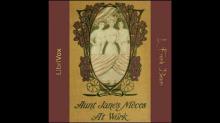 Aunt Jane's Nieces at Work
Aunt Jane's Nieces at Work Aunt Jane's Nieces on the Ranch
Aunt Jane's Nieces on the Ranch Aunt Jane's Nieces in the Red Cross
Aunt Jane's Nieces in the Red Cross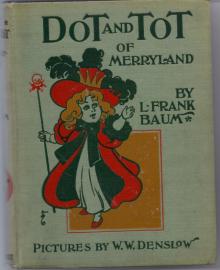 Dot and Tot of Merryland
Dot and Tot of Merryland Aunt Jane's Nieces on Vacation
Aunt Jane's Nieces on Vacation The Giant Horse Of Oz
The Giant Horse Of Oz The Hidden Valley of Oz
The Hidden Valley of Oz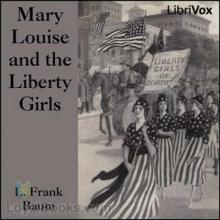 Mary Louise and the Liberty Girls
Mary Louise and the Liberty Girls Mary Louise Solves a Mystery
Mary Louise Solves a Mystery The Santa Claus Stories
The Santa Claus Stories Aunt Judith: The Story of a Loving Life
Aunt Judith: The Story of a Loving Life Aunt Jane's Nieces
Aunt Jane's Nieces Wonderful Wizard of Oz (Barnes & Noble Classics Series)
Wonderful Wizard of Oz (Barnes & Noble Classics Series) Oz, The Complete Collection
Oz, The Complete Collection Complete Works of L. Frank Baum
Complete Works of L. Frank Baum The Wizard of Oz
The Wizard of Oz Oz 10 - Rinkitink in Oz
Oz 10 - Rinkitink in Oz